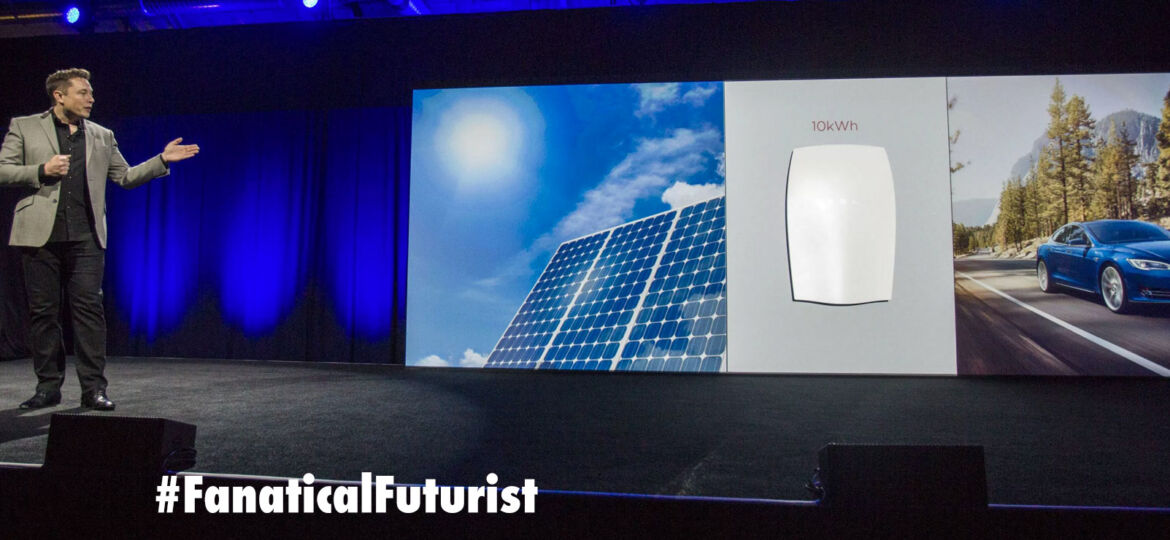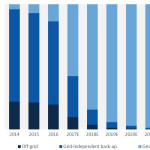
WHY THIS MATTERS IN BRIEF
Slowly but surely energy grids are modernising and decentralising, and homeowners are at the forefront of the shift, embracing renewable energy and new energy systems faster than ever before.
 Love the Exponential Future? Join our XPotential Community, future proof yourself with courses from XPotential University, connect, watch a keynote, or browse my blog.
Love the Exponential Future? Join our XPotential Community, future proof yourself with courses from XPotential University, connect, watch a keynote, or browse my blog.
Thanks to companies like Tesla and their Powerwall product the residential energy storage market is booming as home owners, many of whom are racing to embrace new forms of renewable energy, such as solar and wind power, increasingly buy battery packs for their homes – you know, those ones you keep seeing adverts for – and as society starts its switch to electric cars this is a trend that will only continue to accelerate further.
Now, according to a new report from GTM Research, the US Residential Battery Storage Playbook 2017, 2017 will be the first year that new “Grid-Tied” battery packs, in other words the battery packs that feed energy into both the home owners’ own mains supply and to the local grid, will outnumber the number of new Off-Grid and Grid-Independent systems in the US. And while this might not seem too exciting as news goes what it means is that slowly we’re seeing more home owners weening themselves off of the large utility providers grids and embracing their own renewable power sources. In short, it’s the start of a trend towards more green, self-sufficient, and cheaper energy sources, and over all it will help accelerate the development of larger community micro-grids and the disintermediation of the big energy companies.
While data was difficult to come by because of the nature of the market, to date Off-Grid and Grid-Independent backup storage applications have dominated the US residential energy storage market, and GTM Research estimates that in 2016, over 4,400 residential battery systems were deployed across the US, representing 127 megawatt-hours of storage, and of those systems, 86 percent were Off-Grid or Grid-Independent backup.
This year, however, they’ve seen a major reversal of that trend, and by the end of 2017, Grid-Connected deployments will make up 57 percent of the total, and by 2022 they estimate that figure will balloon to 99 percent.
People are embracing new, cleaner forms of energy at home
According to the report both homeowners and utilities are driving the revolution, each with a different set of needs. Homeowners are adding storage systems for backup power and to save money, while the utilities are encouraging adoption in order to mitigate the effects of high solar penetration on the grid.
“It is most instructive to think of the residential battery market not as a monolithic entity, but rather as a patchwork quilt of geography – and homeowner specific applications that will be stitched together over time,” write the authors of the report, “each application lends itself to a specific set of system requirements, which may potentially overlap with the requirements for other applications. Further complicating the matter, homeowner preferences and site-specific constraints may alter or limit what can be achieved by a given system.”
Today, residential energy storage is concentrated in a few markets with the right mix application and regulatory environment, notably Hawaii, California, and states in the Northeast. However, GTM Research expects a confluence of factors, including falling systems costs and utility rate design, to drive growth for the segment.
“The underlying drivers of product-market fit, and hence industry growth, point toward a robust future outlook for residential battery storage,” they write, “the market has the potential to dramatically evolve over time, and industry stakeholders can drive that evolution through technology, product and regulatory efforts.”



















[…] supply electricity to your home when you need it – such as during a power cut. It’s also this same system that companies like BP and Tesla and the state of California are now using to turn your home into […]